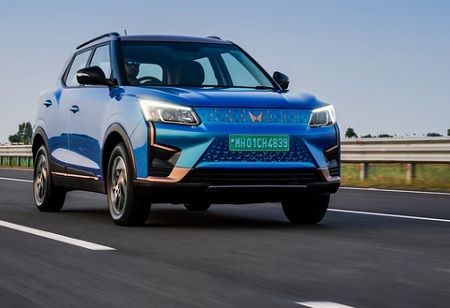
Mahindra Prioritizes Range and Technology Over Price in Future EVs

 Mahindra & Mahindra (M&M) is set to revolutionize its electric vehicle (EV) offerings by emphasizing advanced technology, extended driving range, and enhanced user experience, moving away from a primary focus on cost. R. Velusamy, President of Automotive Technology and Product Development at M&M.
Mahindra & Mahindra (M&M) is set to revolutionize its electric vehicle (EV) offerings by emphasizing advanced technology, extended driving range, and enhanced user experience, moving away from a primary focus on cost. R. Velusamy, President of Automotive Technology and Product Development at M&M.
Velusamy explained that while the Total Cost of Ownership (TCO) approach which highlights savings from switching from petrol or diesel to EVs has worked well for early adopters, the long-term growth of the EV market will hinge on delivering superior range, cutting-edge technology, and a compelling overall experience. He noted, "As long as you have the right range and offer an incredible experience, customers don’t care whether it's EV or ICE. I don’t think Elon’s [Elon Musk, CEO of Tesla, SpaceX] vehicles are selling because they're electric. Many of the other OEMs have made the mistake of focusing solely on TCO".
Mahindra’s shift in strategy is set against the backdrop of a cooling Indian EV market. Despite a surge of over 91% in FY24, the electric four-wheeler market in India saw a 22% sequential decline in sales to 7,415 units in April 2024, the lowest since January. This trend has been acknowledged by Tata Motors, a leading player in the Indian EV market. P. Balaji, Chief Financial Officer of Tata Motors Group, noted that the phase of early EV adopters is waning. "We are clear that the phase of the early majority wanting to come in on an enthusiastic mode is probably getting over", Balaji said in a post-earnings call.
M&M currently offers only one electric model, the XUV4OO, but is preparing for a significant expansion with its ‘Born Electric’ range. This new lineup, developed from the ground up, is scheduled for launch in Q1 of 2025. By 2030, Mahindra plans to introduce seven new EV models, aiming to capture the evolving demands of tech-savvy, young, and aspirational Indian consumers.
Puneet Gupta, Director at S&P Global Mobility, highlighted the importance of Mahindra’s strategic shift. He pointed out that India’s EV market is still in its nascent stage, with current buyers being highly experiential and willing to pay a premium for technology and high-end features. "These buyers are tech-savvy and won’t mind paying a premium for a vehicle packed with technology and high-end features. Therefore, Mahindra’s strategy may pay off", Gupta said.
Gupta also noted Mahindra’s existing customer base, which is accustomed to paying over Rs20 lakh for their petrol and diesel models. This positions Mahindra favorably for a premium EV offering. The tepid response to the competitively priced XUV4OO, which was positioned against Tata Motors’ Nexon.ev, further underscores the need for a premium approach.
However, Tata Motors is perceived to have a competitive edge in the EV market due to its extensive involvement in the entire EV ecosystem and participation in various Productivity Linked Incentive (PLI) schemes. Gupta observed that Tata Motors' intense focus on the EV segment positions it well for launching competitively priced models.
Velusamy emphasized that modern car buyers view their vehicles as multifunctional spaces rather than just modes of transportation. "Today’s car buyers are not looking at a car to commute from one point to another but seeing it as a moving office, home, or café", he said, underscoring the need to cater to customer expectations beyond traditional engineering considerations.
Mahindra's successful premium models, the XUV7OO and Scorpio N SUVs, demonstrate the market’s willingness to embrace higher-priced vehicles when they deliver superior experiences. This success bodes well for Mahindra’s upcoming EVs, which aim to blend advanced technology, extended range, and a rich user experience to capture a broader market segment.